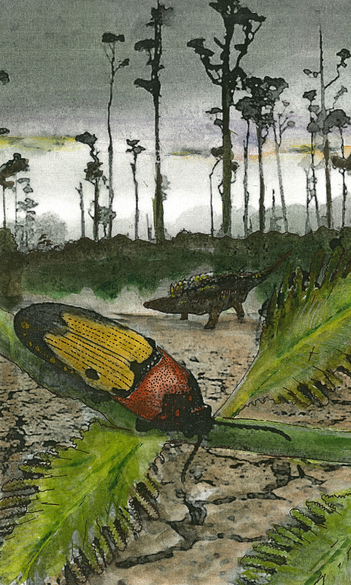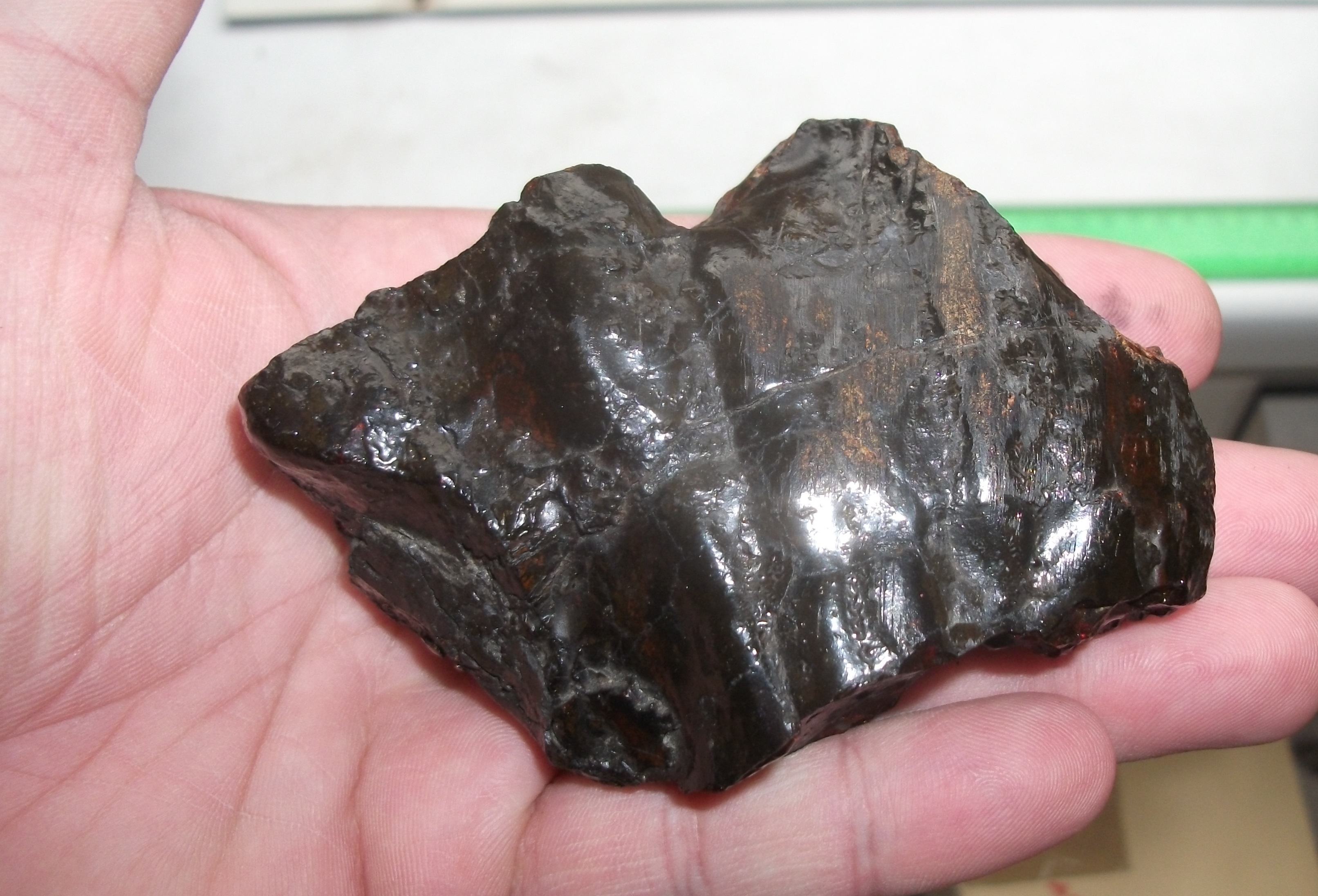New dinosaur-era arthropod species discovered in the Bakony Mountains

The staff members of the Hungarian Natural History Museum and Eötvös Loránd University, in cooperation with other researchers from Hungary and abroad, studied the amber inclusions discovered near Ajka, Veszprém County, originating from the Late Cretaceous, when dinosaurs had still ruled the planet. Amber is the fossilised resin of ancient plants, which sometimes contains the remains of small animals and plants called ‘inclusions’. From the recently examined dozens of inclusions hidden in the 85-million-year-old amber, often on the microscopic scale, researchers first selected a spider and a click beetle. Each was studied in cooperation with a different team of researchers, who explored the inside of the stone using special imaging technologies.
The work started at the University of Pannonia in Veszprém with the contribution of Dr. Kristóf Kovács. After the CT device of the university, researchers also took their chances with several other CT scanners in Hungary. Finally, through the connections of János Novák (ELTE Faculty of Science), one of the members of the research team, it was possible to put to an open test the synchrotron equipment of the German Electron Synchrotron (Deutsches Elektronen-Synchrotron, DESY) in Hamburg, which proved to be the best of all. The work in Hamburg was assisted by local researchers Dr. Danilo Harms, Dr. Ulrich Kotthoff, and Dr. Jörg Hammel.

The spider soon turned out to belong to the family Hersiliidae, also termed ‘two-tailed spiders’. One of its most interesting external characteristics is the elongate, tail-like spinneret, which the spider was named after.
The other inclusion was a small click beetle (Elateridae), which was scanned with the contribution of Dr. Ákos Kukovecz and Dr. Imre Szenti in the microCT equipment of the Department of Applied and Environmental Chemistry at the University of Szeged. “The chitin covering the bodies of beetles is thicker and harder than that of spiders, so the scanning of the beetle of a few millimetres was not a problem for the microCT in Szeged,” explained Dr. Imre Szenti.
 The model of the Hungarosilia verdesi synchrotron (after Szabó et al., 2022).
The model of the Hungarosilia verdesi synchrotron (after Szabó et al., 2022).
The digital 3D model of the click beetle was then carefully studied by Dr. Robin Kundrata (Palacký University, Czech Republic) and Tamás Németh (the Hungarian University of Agricultural and Life Sciences). Their work was assisted by Johana Hoffmannova (Palacký University, Czech Republic) and Dr. Alexander S. Prosvirov (Moscow State University). All of them are internationally renowned experts in click beetles, having worked in research on fossil and modern click beetles on several occasions.
Based on their preserved external features, both inclusions proved to be completely new species for science.
The spider has been called Hungarosilia verdesi. The species was named after Gábor Verdes, a former coal miner from Ajka. “The click beetle was named Ajkaelater merkli, in honour of the town of Ajka and Dr. Ottó Merkl, the former entomologist and curator of the Hungarian Natural History Museum,” explained Dr. Robin Kundrata.
 The artistic reconstruction of Hungarosilia verdesi (by Márton Szabó).
The artistic reconstruction of Hungarosilia verdesi (by Márton Szabó).
“Based on the known plant fossils, the former Ajka Coal swamp was a habitat with extremely lush vegetation and had a tropical or subtropical monsoon climate with average annual precipitation of 2000-2500 mm, which probably fell in the area seasonally. It is not surprising at all that two-tailed spiders and click beetles were present here. Today, they also live in similar habitats, especially in the tropics,” added Dr. Emese Bodor, palaeobotanist.
The real significance of the discoveries not only lies with the new species but also the period of Earth’s history they come from.
“The inclusions were discovered in Late Cretaceous, so-called Santonian deposits. Very few amber finds are known from this era of Earth's history, and only a few amber deposits of this age have been discovered throughout Europe. There are greater or smaller gaps in the evolution of many groups of animals and plants from periods that have yielded very few fossils so far. The currently excavated material fills such a gap for both two-tailed spiders and click beetles, as neither of them have been known from European, Santonian sediments before,” said Márton Szabó, a research associate at the Hungarian Natural History Museum.
“It is also important to know the fauna of the Ajka Coal Formation thoroughly, as snails and mussels, fish, aquatic reptiles, and even the remains of dinosaurs have been found here before, but terrestrial arthropods have not been discovered here until now. The bodies of these creatures decompose extremely quickly after the death of the animal, disappearing in the circle of life,” added Dr. Attila Ősi, Head of the ELTE Department of Palaeontology.
This research was supported by the MTA-ELTE Lendület Dinosaur Research Group, the National Research, Development and Innovation Office, the University of Pannonia (Veszprém), Eötvös Loránd University (Budapest), the University of Szeged, Palacký University (Olomouc), Hungarian Natural History Museum, German Electron Synchrotron (DESY, Hamburg), and the Russian Science Foundation (RSF).

